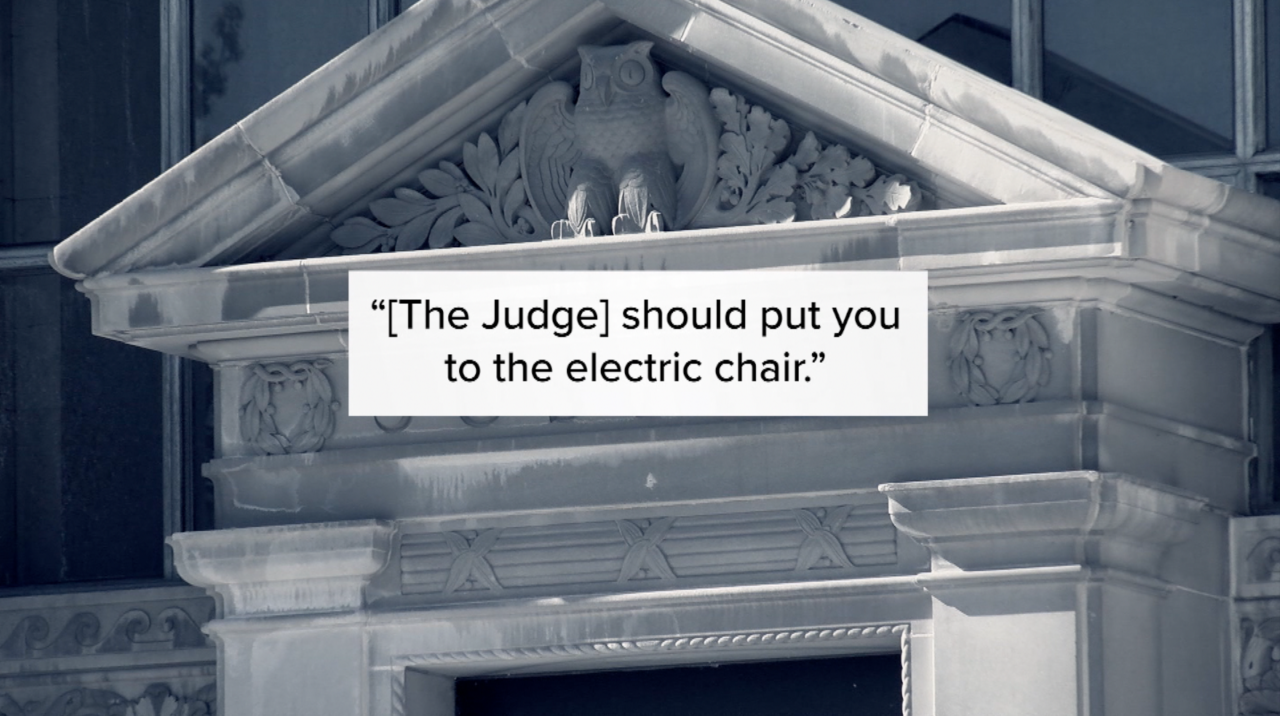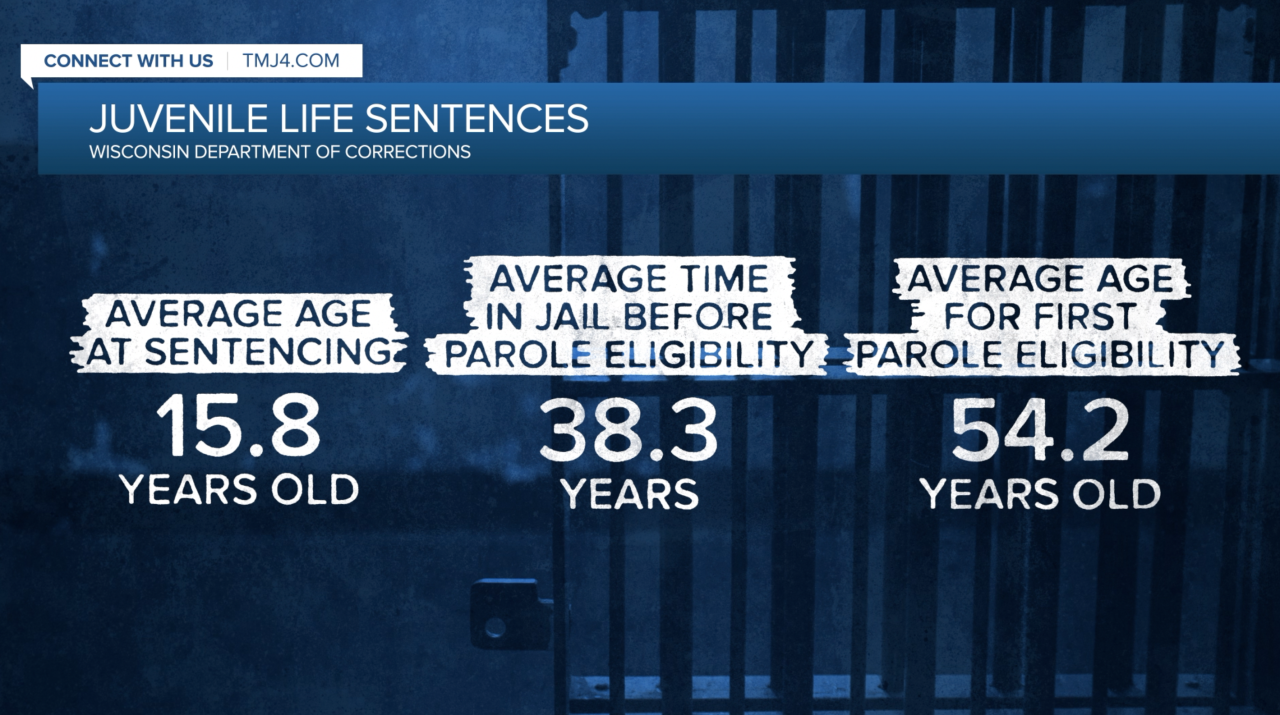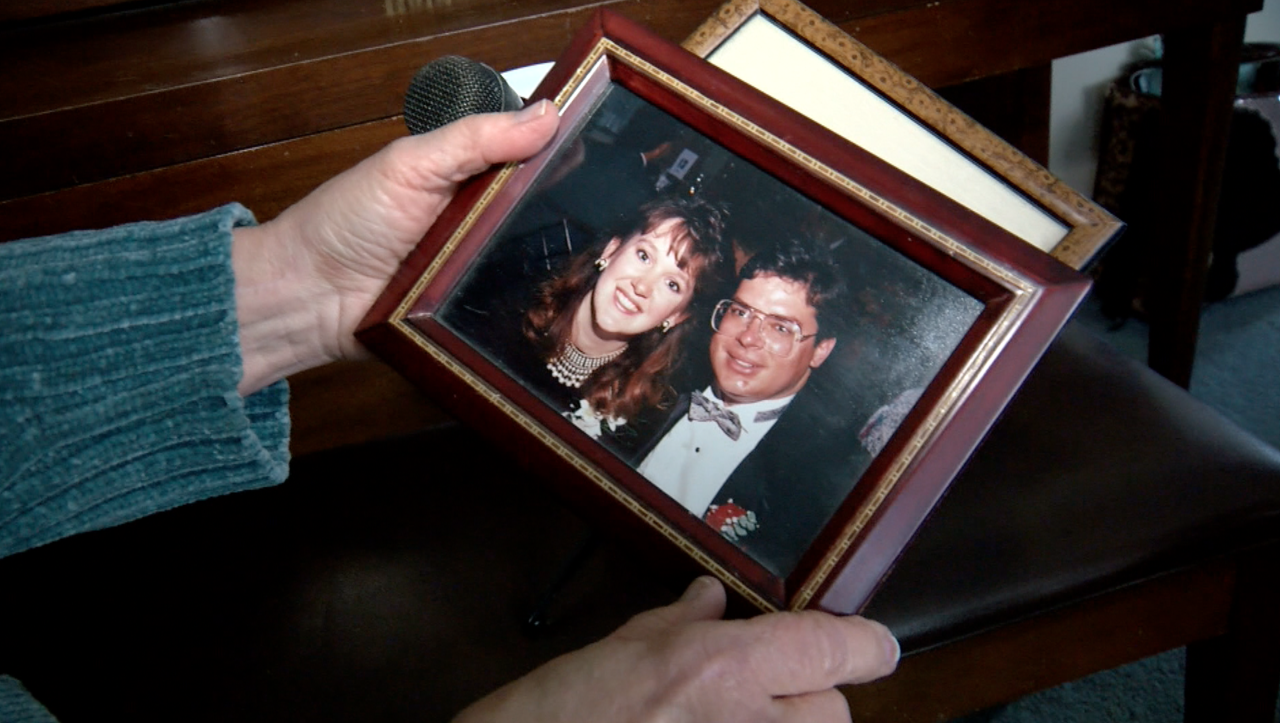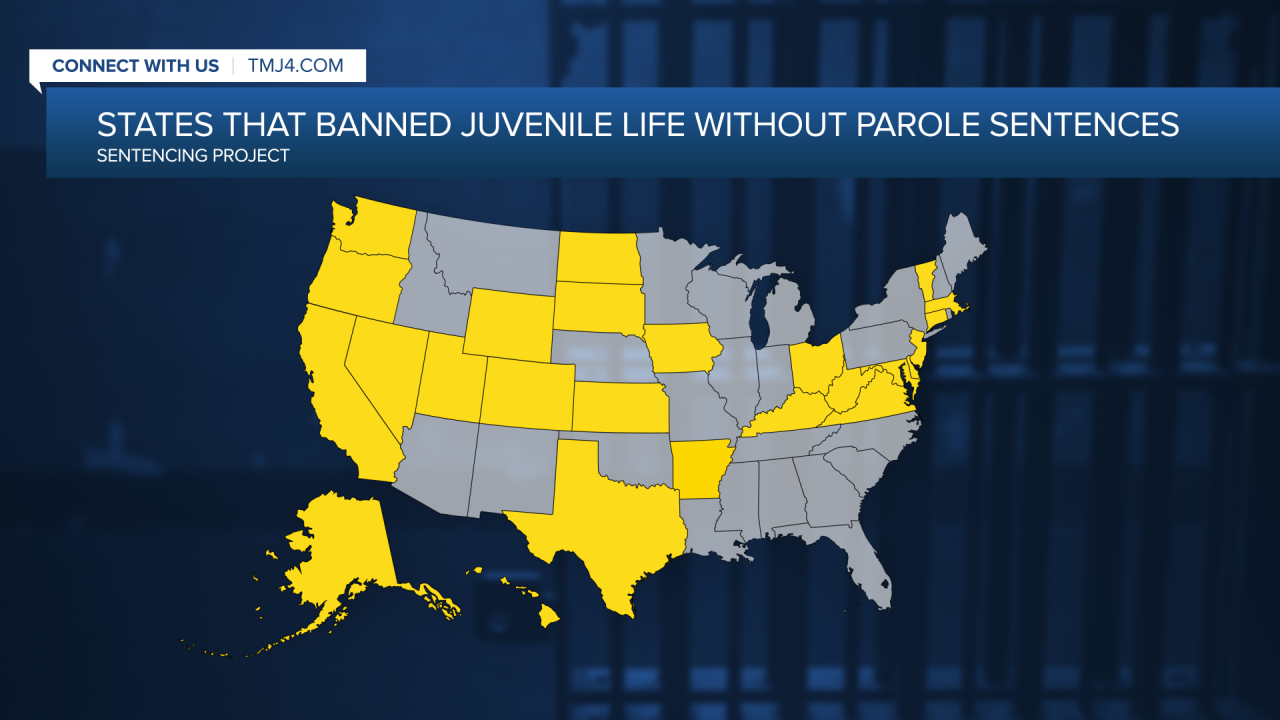*Watch Shaun Gallagher's full story tonight on TMJ4 News at 10 p.m.*
15 years old, making life-changing decisions.
“I pointed the gun at his head and I pulled the trigger twice.”
It was 1992. Dominee Meek was supposed to be running errands for his mom, but his friends picked him up and the group found trouble. Meek saw a man named Lawrence from a rival gang. Meek felt he was being disrespected because Lawrence continued to walk the streets and neighborhoods that he considered his own.

“When we saw him, they were like, 'didn’t you kick him out of the neighborhood?'” Meek said. “'Why is he back?'”
The group pulled up and Meek got out and beat him up. However, after the group left Lawrence, a question was brought up in the car, and Meek's decision would turn out to be one with heavy consequences.
“A guy in the car made the point, they were tired of me having issues with this guy,” Meek said. “He said, something ought to be done. Someone ought to kill him.”
Silence struck the car until one of the crew asked who would do it.
Meek volunteered.
The decision was an impulsive one, but had the weight of a lifetime of hardships. Meek faced repeated abuse without any intervention as a child, leading him to search for acceptance elsewhere. The streets called and he answered.
On that Valentine’s Day in 1992, he answered the call again. Near 5th and Clarke, Meek followed through on his decision, getting out of the car with a sawed-off shotgun and tracking Lawrence down, who was now in a crowd tending to his wounds after the beating.
Meek looked down the barrel of the gun and, at 15 years old, pulled the trigger.
“In my head, if I kill Lawrence, then I would become a man,” Meek said. “It would make me a man. Also, I would belong. I had been a gang member for a year officially. I grew up around it but never felt as if I belonged.”
But as the muzzle flashed, Lawrence wasn’t the one who was hit. Instead, a 25-year-old man named Warren Smith Jr., who was not involved in any of the issues between Meek and Lawrence, fell to the ground. The father of two children under the age of three died in the streets.
“He had nothing to do with me and Lawrence’s beef but he died because of me,” Meek said.

FACING THE CONSEQUENCES
Another woman was also hit by gunfire in the face but survived. While Meek hoped the shooting would turn him into a man, it forced him to grow up in different ways. He was on the run for two weeks, coming to realize the gravity of what had happened. A life was gone because of him. He soon realized he had to turn himself in. His strong belief in religion left him feeling he needed to serve an eye for an eye, even if it meant his life was over.
“I decided to turn myself in to become the man that I thought killing Warren and trying to kill Lawrence would make me,” Meek said. “A man does what? Takes responsibility for his actions, among other things. I killed somebody and I knew I had to pay a consequence for that.”
So, at 15 years old, Meek went through a trial and even pleaded guilty to the crime, as not to put the family of Warren through any more trauma. The result: A mandatory life sentence for first-degree homicide.
In Wisconsin, there is no death penalty. That was abolished in 1853. However, a crime of first-degree murder carries a mandatory life sentence, regardless of age. So, at 15, Meek owned up to his crime, believing he’d never spend another day of his life outside of prison.
“I didn’t comprehend it at the time, but I know I’m going to die in prison,” Meek said. “That’s what I thought. I am accepting that. I am 15 years old accepting the fact I’m going to die in prison. What sense is that? I just threw my life away and I took a life too.”
“Even though it’s been 29 years, it still feels the same” Lisa Harper, Warren’s sister said. “You never forget. It’s like it’s happening all over again.”
Harper met with TMJ4 at the scene of the shooting to talk about how her feelings about the situation have evolved over time.
She says it pains her every day to wonder what her brother would be doing now.
“He’d be 55 now,” Harper said. “What would he be doing? He’d have children and grandbabies. What would he be doing at this time now?”
THE GIFT OF A SECOND CHANCE
While Warren will never come back, Meek has had a chance at living a life on the outside.
The judge at the time listened to Meek's heartfelt and remorseful statement in court and gave him a possibility of parole some 25 years later.
In September of 2020, Meek was released from jail. He spoke to TMJ4 at McGovern Park, pausing between answers to watch geese glide into the pond at the park. Meek’s appreciation is at its peak right now, understanding what he’s taken away from society and nearly taken away from himself.
But just eight years later after his original conviction, a change in the law in Wisconsin would have made his outlook much different. Truth In Sentencing essentially eliminated parole for offenses. The law was aimed at supporting victims and protecting the community. If someone in Wisconsin is sentenced to five years in prison, they will serve five years in prison. Or, in a case like Meek's, life in prison is life in prison, no matter the age you are convicted.
“These are young people who will make mistakes,” Representative David Bowen said. “They deserve the chance to correct that mistake.”

Bowen is pushing for a change to the law as it stands. There are 112 people jailed for life in Wisconsin for crimes they committed as juveniles. Nearly all have been given a parole eligibility date. Although, for the 29 people sentenced after the year 2000, when Truth In Sentencing went into effect, those parole eligibilities aren’t guaranteed.
“Had I committed my crime after 2000, I would have killed myself,” Meek said. “It was hard staying positive and finding a reason to go on. When you don’t got that reason at all, what do you do?”

Over time, Lisa Harper’s view on her brother’s killer has changed as well; she says her faith in God allows that. During sentencing in 1992, she told Meek she hoped the judge would give him the electric chair. Now, she says she understands he was only 15 years old and feels he did his time.
“He served what he needed to serve,” Harper said. “I’m hoping that taught him and he can teach somebody else, 'Hey this is what happened to me when I did this. I went to jail.' It’s not a good place you want to be. I think his sentence was fair.”
Though Dominee was given a parole eligibility date 25 years later, he spent 28 years behind bars. Nearly all of the 29 juvenile offenders sentenced after Truth In Sentencing have been given a parole eligibility date; just two will never have that chance. However, the length of time is significant enough to be considered a “de facto life sentence” meaning their first chance at eligibility will be at an age where they will be too old to be a contributing member of society.
INSIDE THE PSYCHOLOGY OF THE TEEN BRAIN
The I-Team analyzed the sentencing data in Wisconsin, finding the 29 offenders sentenced after Truth In Sentencing were an average age of 15.8-years-old. On average, they will spend 38.3 years behind bars, meaning those offenders will not get the chance at freedom until they are over 54-years-old for a choice they made as teenagers.

Experts in child psychology feel that’s not fair.
“Adolescents are not just little adults or big children,” Dr. David Thompson, Clinical and Forensic Child Psychologist said. “They’re very different.”
Thompson points to science showing juvenile brains are not yet fully matured.
“The ability to simply control one’s self in a particular situation is developmental,” Thompson said. “For adolescents, it’s one of the last brain circuits to develop. More recent research has identified a second set of brain pathways that have to do with a rewards system. They develop at a different pace.”
Thompson suggests people think about themselves at 15 years old and the decisions they may have made then. As adults, he says, the way we think about our former choices can be embarrassing with the experience and maturity adulthood brings. He says, in cases like Meek's, it’s not that different.
“There is an imbalance in brain circuitry development for adolescents,” Thompson said. “They react differently than children or adults. They tend to perceive situations as much more threatening than a child or adult. You or I might see a situation and not be afraid for our lives. They may be in the exact same situation and have genuine fear for their lives.”
Thompson suggests the adolescent brain doesn’t fully develop until someone is in their mid-20s. Adding in any additional trauma from childhood, and it could take longer. However, he says change is possible for people who make mistakes, no matter how grave, in their teens.
“We know that 15 to 20 years down the line, these individuals, for the most part, even if they committed a very significant crime as an adolescent, their systems are much more balanced at that point,” Thompson said. “Their self-control is usually much better. Their reward-seeking and self-control skills are balanced so they generally, for the most part, do not present a severe threat to society.”
'A DANGEROUS PSYCHOPATH'
Two years before and two hours south of Milwaukee, that severe threat reared its head for a Winnetka, Illinois family.
“Nancy, Richard and their baby were dead,” Jennifer Bishop-Jenkins said.
In 1990, David Biro, a 16-year-old, carried out a meticulously thought out homicide plan to kill Bishop-Jenkins' pregnant sister and brother-in-law. Bishop-Jenkins says Biro grew up in a very wealthy family but showed signs something was off. She says he got into mischief like shooting windows and tires of cars with a BB gun but slowly escalated. She says he lit a student’s sweater on fire, stole computers from the school and tried to poison his parents.
During the last stunt, Biro’s mother almost died and the 16-year-old was taken to a mental hospital for evaluation.
“They knew he was trouble,” Bishop-Jenkins said. “They diagnosed him as a dangerous sociopath. They said they did not want to release this guy. He needs to stay here for treatment. But he had his parents wrapped around his finger. They did like they always did, never trying to hold him accountable. Never any consequences. They let him manipulate them.”
Four months later, Biro carried out his plot against Nancy, Richard and their unborn baby.

As a result, Biro received three life sentences and will never get out of jail.
It’s something Bishop-Jenkins says is fair and best for everyone.
“I don’t think every kid that kills is a psychopath,” Bishop-Jenkins said. “The man who killed my family members was. There is a huge difference in the potential rehabilitation of someone that grew up in poverty and had nothing except the gang to give them structure and belonging in their life or if there is a sort of forced imitation and things like that. Those people are fixable and there is nothing wrong with their brains. They may have just had a rotten life. But it’s not the same as the guy that killed my family members.”
Bishop-Jenkins has supported youth justice reform. She supported banning the death penalty for juveniles. However, she also supports victims’ families. It’s why she created the National Organization of Victims of Juvenile Murderers. While there have been several US Supreme Court decisions related to juvenile sentencing, Bishop-Jenkins feels the option of giving out Life without Parole is an option worth keeping. She says NOVJM as an entity does not take any stance on sentencing. She only shares her feelings as one member who has lost a loved one to murder.

“If they are violently inclined, they’re dangerous,” Bishop-Jenkins said. “That’s why we need life sentences. We don’t need them for everybody. We shouldn’t throw them out willy nilly. But we need them. There are very few of these dangerous psychopaths and sociopaths, very few. Thank God right? I think the job of the criminal justice system is to find them and for those people, we need to give the courts and judges a range of sentencing options that prioritize public safety.”
CHANGING THE SYSTEM
The US Supreme Court ruled in April on giving juveniles life without parole in the Jones v. Mississippi case. While the highest court has banned mandatory life without parole sentences for juveniles, it also ruled judges should consider the youth of the offenders in sentencing, taking into account the science behind brain maturation and conduct.
It’s a decision people from both sides of the aisle have shown support for in different ways.
“Of course youth should be considered,” Bishop-Jenkins said. “Mandatory for someone under 18 should maybe be done differently. That shouldn’t be a mandatory thing. They should have their youth considered. Life without parole should also be an option if it’s a dangerous psychopath or sociopath.”
“What a good thing,” Rep. Bowen said. “It clarifies that the US Supreme Court wants states to make the decision. They are clarifying that it is not put on the US Supreme Court to determine. Those parameters are up to state legislature so it raises even more urgency for us as a state to join other states across the country that are.”

With the decision up to the judge on any specific case, it would be up to them to make the decision. According to The Sentencing Project, 25 states have banned juvenile life without parole sentences.
When it comes to life without parole, by and large any juvenile who could be sentenced is facing the most serious crimes imaginable and would therefore likely be waived into adult court. So some of the efforts at rehabilitating a troubled youth offender may get lost.
“Once a youth is waived, they lose a number of checks and balances we have in children’s court,” Judge Laura Crivello, Presiding Judge in the Children’s Division at the Vel R. Phillips Youth & Family Justice Center said. “Everything in the adult system is quite different than the juvenile system.”
Judge Crivello says the two systems handle sentencing entirely different, down to the verbiage they use; juveniles go to disposition compared to adults who are sentenced.

However, Judge Crivello says the decision to waive a juvenile into adult court is no easy task for the courts. She says judges “almost sweat through their robes” in making that kind of decision.
“In most of my cases, I can bring that kid back every two to three weeks to check how they’re doing,” Crivello said. “I can encourage them. I can also hold them immediately accountable. We also have a whole team of stakeholders at the table to find if there is a need or resource this youth needs so we can find it and put it in place to make a difference. That’s every two to three weeks. In the adult system, once you go to sentencing, for the most part, that’s when they’re done with the court system. They don’t have as many checks on the continued welfare of the youth we seem to have at the juvenile court.”
That kind of support is something Meek hopes to see for more juvenile offenders like himself.
“Do an honest evaluation of the child,” Meek said. “If they’re not ready to get out and it is about reform, get that child the help they need to be a meaningful member of society. But if we’re not doing it in prison you can’t blame the child for not becoming that person in prison.”
Bowen believes the legislation will draw bipartisan support and expects a vote before the end of the year. It’s a decision that will have a large impact on something with so many individual opinions on how long juvenile homicide offenders should be in prison.
“At 10 years, do an honest evaluation,” Meek said. “If they’re not ready, what do we have to do? What should we be doing to get them ready to be released into society?”
“I think we have the answer here,” Bishop-Jenkins said. “They should have their youth considered. Life without parole should be an option if it’s a dangerous psychopath or sociopath.”
“I felt they should have thrown the key away,” Harper said. “Lock him up and throw the key away. That’s how I felt then. But now, I think it was fair. He served what he needed to serve.”




